Planning and Research: Lay a Strong Foundation
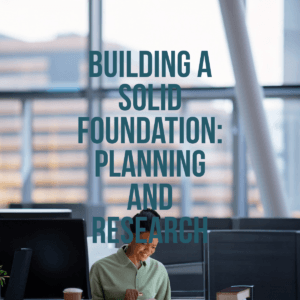
Before you start designing and building your website, it’s crucial to lay a solid foundation through thorough planning and research. This involves understanding the purpose of your website, the needs of your business, and how the website aligns with your business goals. Consider factors such as the budget, timeline, and resources required for the project. Planning helps you avoid common pitfalls and sets the stage for success by providing a clear roadmap. This stage might also include stakeholder consultations to gather insights and expectations that can inform your website strategy.
Understanding Your Target Audience

A successful website is one that meets the needs of its users effectively. To achieve this, you must have a deep understanding of your target audience. Identify who they are, their demographic characteristics, preferences, behaviors, and what motivates them. Create audience personas to guide your website design and content decisions. Consider engaging with potential users through surveys or interviews to gather qualitative insights. Understanding your audience allows you to tailor the website’s design, content, and functionality to effectively engage and convert visitors.
Competitor Analysis: What Are They Doing Right?
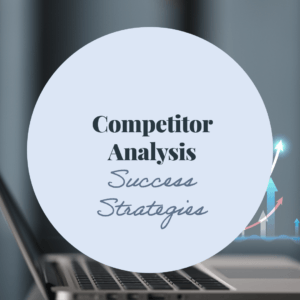
Analyzing your competitors’ websites provides valuable insights into industry standards and innovative practices. Identify your main competitors and closely examine their websites. Pay attention to aspects such as design, user experience, content, and features. Look for strengths and weaknesses in their strategies that you can leverage or improve upon. Competitor analysis helps you identify market gaps, understand customer expectations, and inspire creative solutions that differentiate your website.
Setting Clear Goals and Objectives for Your Website
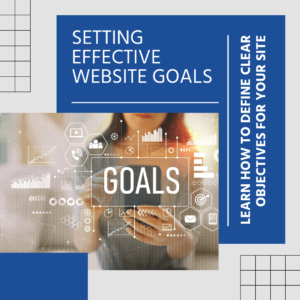
Clear goals and objectives are essential for measuring the success of your website and ensuring it meets business needs. Goals might include increasing brand awareness, generating leads, driving sales, or providing customer support. Objectives should be specific, measurable, achievable, relevant, and time-bound (SMART). Setting these clearly defined goals guides your website development process and helps in evaluating its performance post-launch. These goals and objectives should align with your overall business strategy to ensure cohesion and effectiveness.
Choosing the Right Domain Name
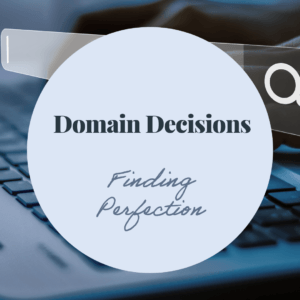
Your domain name is a critical element of your website’s identity. It should be unique, memorable, and reflective of your brand. Keep it short and easy to spell to ensure users can find it easily. Consider incorporating relevant keywords that improve search engine optimization (SEO). Check the availability of your chosen domain name and secure multiple domain extensions to protect your brand identity. Additionally, ensure that your domain name is future-proof, allowing for business expansion without needing a change.
Creating a Functional Sitemap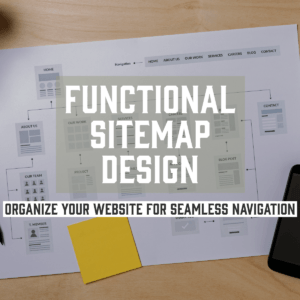
A sitemap is an outline of your website’s structure, showing the relationship between its different pages. Creating a functional sitemap helps to map out the navigation, ensuring a logical and user-friendly flow throughout the site. It serves as a guide to organizing content in a way that enhances user experience and supports SEO. Each page should have a clear purpose and be intuitively accessible to users. The sitemap also acts as a crucial tool for developers and designers throughout the website building process, ensuring alignment with the original plan.
By expanding on these points, you can ensure a comprehensive strategy for building a business website that effectively serves your company’s needs and enhances your online presence.
Design and User Experience (UX)

The design of your website plays a crucial role in attracting and retaining visitors. Focus on creating an aesthetically pleasing design that also prioritizes functionality. Elements such as color schemes, typography, and imagery should reflect your brand identity. Additionally, prioritize user experience by ensuring the site is easy to navigate, with intuitive interfaces and clear calls to action. Consider utilizing responsive design to ensure your site is accessible and functional across all devices, enhancing the user experience.
Content Creation and Optimization
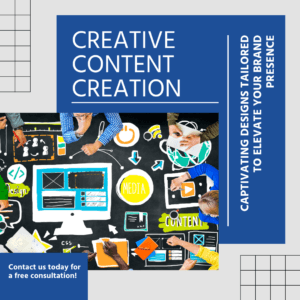
Content is the backbone of your website, providing value to your visitors and influencing search engine rankings. Develop high-quality, relevant content that addresses the needs and interests of your target audience. This includes everything from text to images and videos. Optimize content with SEO best practices to improve visibility in search engine results, including keyword optimization, meta descriptions, and alt text for images. Establish a content plan for ongoing updates to keep the site fresh and engaging.
Development and Testing

Once your design and content are ready, the development phase can begin. This involves coding the website using the appropriate technologies, whether you’re building a custom site or using a content management system (CMS) like WordPress. Following development, rigorous testing is essential to ensure everything functions correctly. Test across multiple browsers and devices to check compatibility, and verify that all links, forms, and interactive elements work as intended. This phase also involves addressing any issues that arise to ensure a smooth launch.
Launch and Post-Launch Evaluation

With development and testing complete, it’s time to launch your website. This stage involves deploying your site to your chosen hosting platform and performing a final check for any issues. Once live, monitor the site closely for any unexpected problems or areas for improvement. Post-launch, gather user feedback and analyze web analytics to evaluate site performance against your objectives. Use this data to make iterative improvements and optimize the site continually for better results.
The Perfect Platform and Tools: Build With the Best

Imagine stepping into the digital world with a vision—a vision to create a stunning, functional website that perfectly represents your brand. However, the journey of building a website starts with a pivotal decision: choosing the perfect platform and tools that can transform your dream into reality.
In this vast landscape of website builders and CMS options, the choices can be overwhelming. Each platform offers a unique palette of features and tools, promising to bring your vision to life. Amongst them, Wealthy Affiliate stands out like a beacon of simplicity and efficiency. More than just a platform, it’s a comprehensive suite that includes website hosting, a robust site builder, and unparalleled training resources. Whether you’re a novice or a seasoned web developer, Wealthy Affiliate guides you through the process, empowering you with the knowledge and tools you need for success.
As you embark on this journey, evaluating different builders becomes essential. Are you looking for intuitive ease, akin to pouring thoughts onto a page? Or do you crave the flexibility of a platform that can stretch with your creative demands? This evaluation process will often lead you through a spectrum of platforms like WordPress, Wix, and Squarespace—each with its own personality.
Consider WordPress, the titan of customization. Its vast library of plugins transforms a basic site into a dynamic powerhouse. Yet, with great power comes responsibility; managing updates and technical nuances can be daunting for some.
Then there’s Wix, the artist of simplicity, providing a canvas that welcomes your creativity with its drag-and-drop interface. No coding required, it whispers. However, this ease sometimes comes with constraints, especially for those who later yearn for advanced customization tweaks.
Squarespace enters the scene with an elegance of its own, ideal for those who appreciate design and aesthetics. Its stunning templates can make any site look professional from day one, but at times, it might leave technical tinkerers wanting more.
Choosing the right platform is just the first brushstroke on your canvas. Enhance your masterpiece with essential tools and plugins that expand functionality. Whether it’s an SEO booster, e-commerce capabilities, or performance optimization, these tools are the unsung heroes that make your website work smarter.
Yet, none of this matters if your masterpiece isn’t ready to be seen by the world—regardless of the device they use. Mobile-friendliness and responsive design are no longer optional; they’re imperative. Crafting a site that looks and performs beautifully across phones, tablets, and desktops ensures that every visitor gets the full experience, no matter how they find you.
If you are intrigued about where to begin, Wealthy Affiliate might just be the compass you need. Its all-in-one platform not only simplifies the technical complexities but offers a vibrant community ready to share insights and tips. Delve into a detailed review to discover why this platform could be your best ally on your web-building journey.
In the end, building a website is much more than a technical endeavor; it’s an art. Choose your tools wisely, for they are the brushstrokes on the canvas of your digital future.
